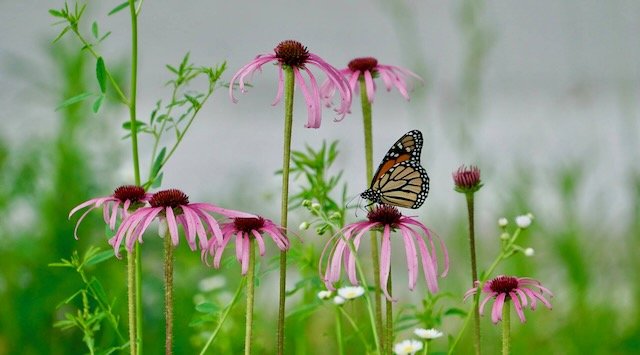A Naturalist Voice
Field Notes by J. Cantrell, photo courtesy of MDC
I have to remind myself as a conservation educator and naturalist not to overlook what might be the obvious (to me). My first awakening on this experience was leading a birdwalk at the Springfield Conservation Nature Center. I was working hard to find participants some exceptional and perhaps uncommon birds and I dismissed a northern cardinal by saying “just a cardinal”. I learned a heartfelt lesson quickly, for I had a couple from Idaho on my trail and they had never discovered the beauty and unique behaviors of one of our locally common species.
Several years ago I took a group of Neosho Middle School students to Prairie State Park for a extraordinary Saturday event. The park had all the “bells and whistles” taking place for a wonderful program of revolving happenings. The Department of Natural Resources often features the very best storytellers of nature and Missouri’s history. Youth and family educational games were taking place; some staff were in character costume. And of course the natural features of Prairie State Park were all around us with harriers in the air, the native grasses in their autumn colors, and the last of sunflowers and asters in bloom. On the way back to Neosho I was playing “popcorn” a type of reading game with the students and then we discussed their favorite part of the Saturday outing. I predicted it would be the impressive American Bison that we saw several of or maybe a spirited killdeer in the parking lot that captured their attention. But no, it was overwhelmingly the stars. Even though, these students don’t live in a large urban area, there was a lesson for me that even those of us who live in a mid-sized town may miss out on the night sky and all its beauty.
I relish every part of the outdoors and certainly every season brings its specialties. I’m lucky enough to live in a rural area, and when I come home late at night I look up and I’m reminded of one more reason why naturalists and outdoors-oriented folks share nature with others.
I hope we all take a little time this month to get out and enjoy the night sky. I love the Native American stories regarding the stars. And when I think about it, it is natural to assume the night horizon to be a significant part of frontier peoples’ lives. Last season(Autumn) there were stories in the stars of a bleeding bear who colored the foliage of the trees yellow and red. This winter, stories may be told of the stars that bring animals to food, or the importance of a cedar tree to the winter community.
Asking kids if they see the “old man’s face” in the moon? Do all stars twinkle? Why do they glimmer? Lastly we may appreciate searching for the Milky Way, the Big Dipper, or the belt of Orion which are all a great foundation for sky discoveries. Nature provides so much wonder, allure, and continued education. Night sky stories are a great part of our heritage and some even our celebrations. The Christmas story is a main focus for the month of December and was it not a shining star that helped relay a message to three Wisemen, hope for the world and shepherds tending to their flocks? So much of what we enjoy, and may be inspired by, is above us and around us the whole time. Just as dusk frames the landscape before the stars are noticeable, our cardinals are among the last to visit our feeders and give “good night” call-notes to the evening. Enjoy the nature trails, appreciate the wild areas and the entertaining night skies. Merry Christmas! - Jeff
Jeff Cantrell is a volunteer MO Mas. Naturalist advisor, local conservation and outdoor educator. Jeff.cantrell@mdc.mo.gov

